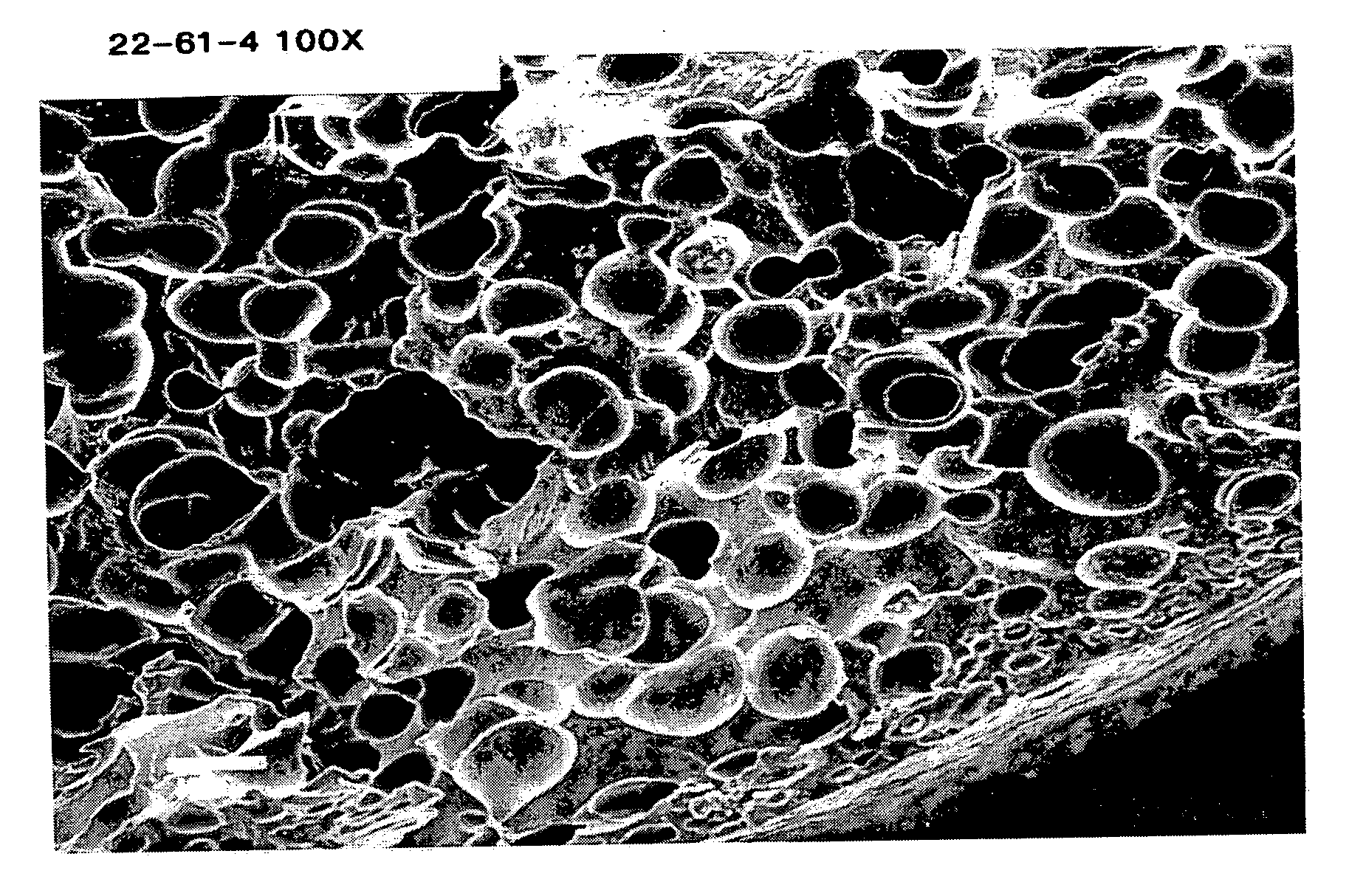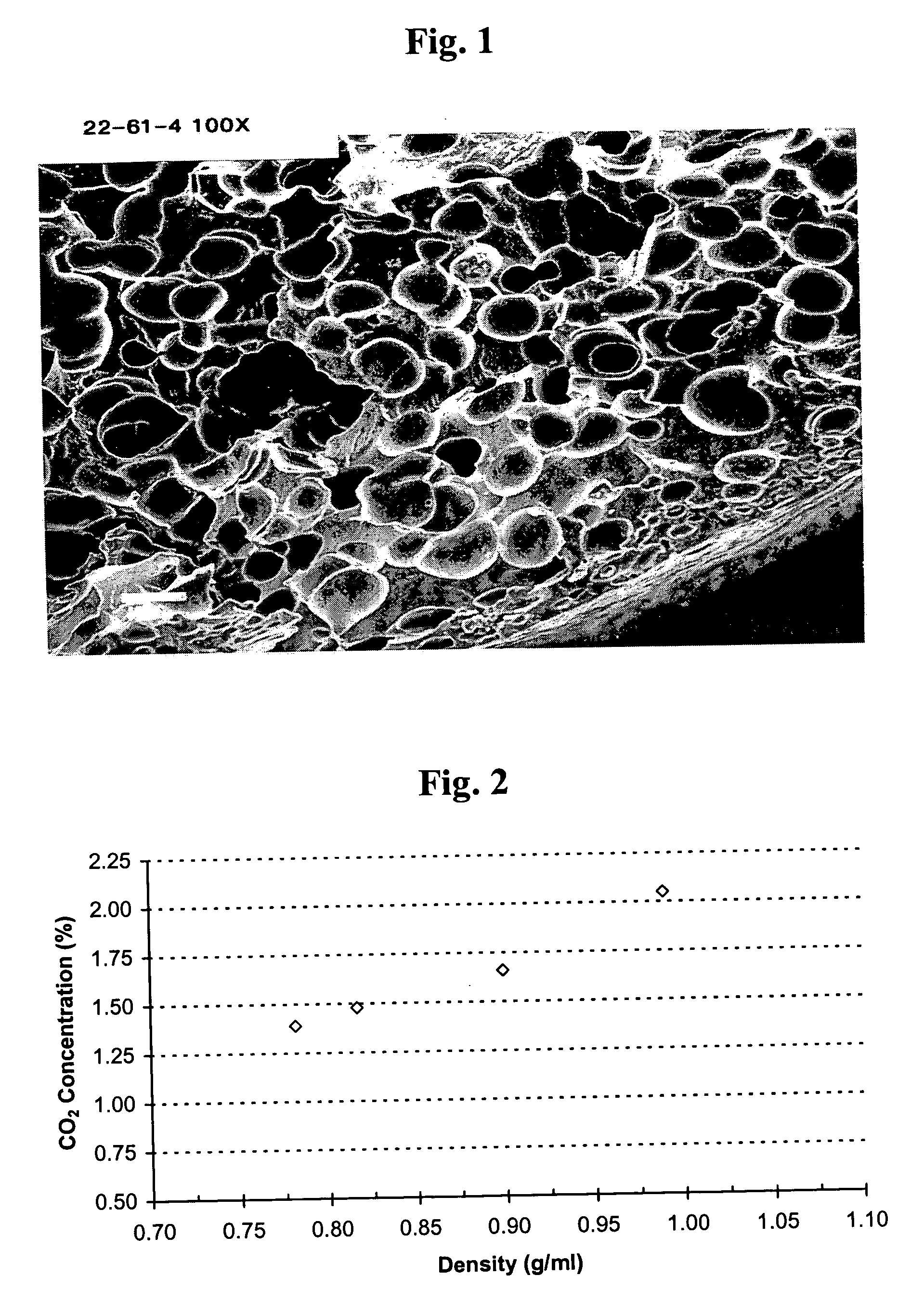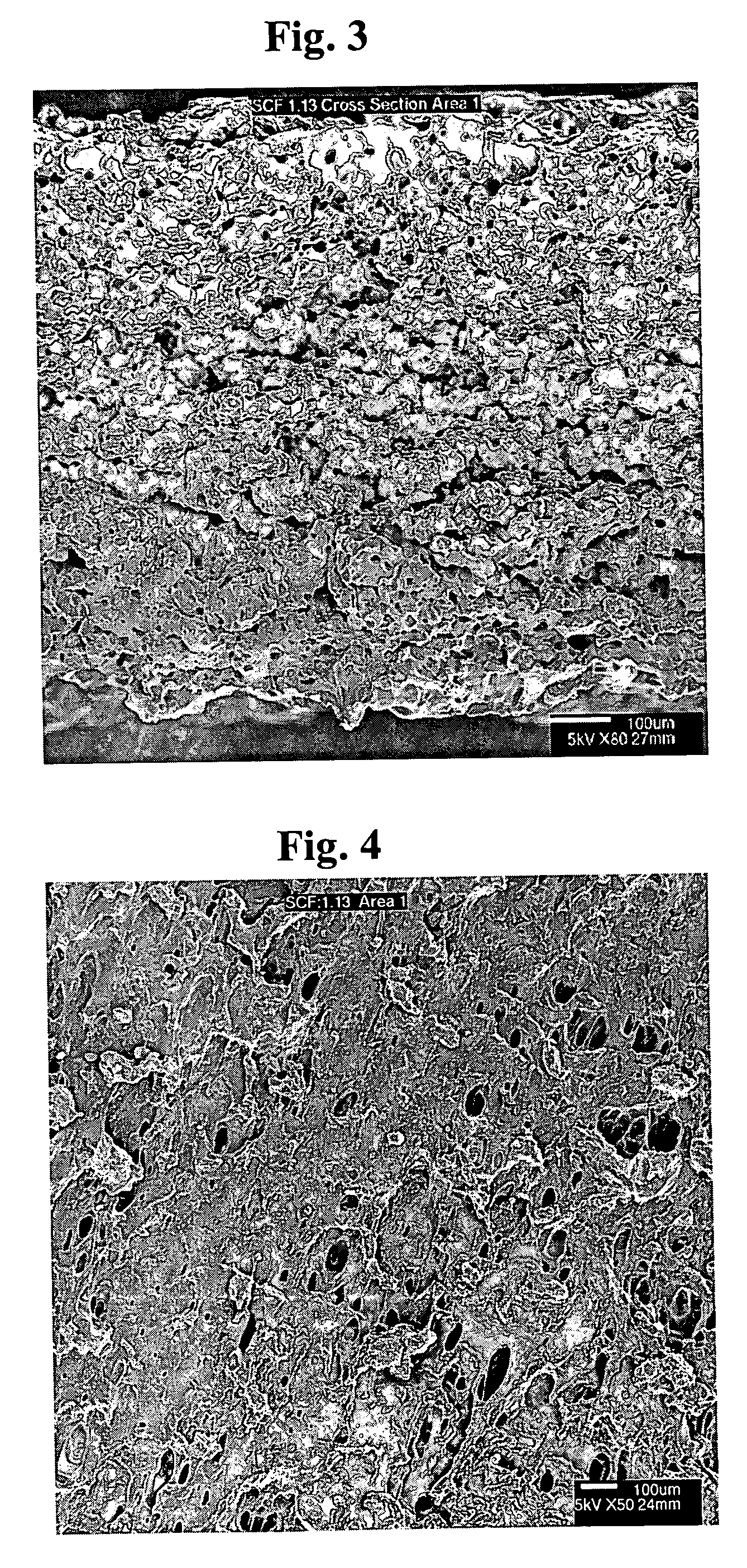Surface textured microporous polishing pads
a microporous, surface-textured technology, applied in the field of polishing pads, can solve problems such as surface features being formed, and achieve the effects of low defectivity, low wafer non-uniformity, and high removal ra
- Summary
- Abstract
- Description
- Claims
- Application Information
AI Technical Summary
Benefits of technology
Problems solved by technology
Method used
Image
Examples
example 1
[0079] This example illustrates a method for producing microporous foam rods having a uniform pore size.
[0080] Thermoplastic polyurethane (TPU) foam rods (1A and 1B) were produced by an extrusion method. Each TPU foam rod was prepared using TPU having a weight average molecular weight of 90,000 g / mol to 110,000 g / mol with a PDI of 2.2 to 3.3. In each case, the TPU was placed in an extruder (Labex II primary, 6.35 cm (2.5 inch) diameter 32 / 1 L / D single screw extruder) at elevated temperature and pressure to form a polymer melt. Carbon dioxide gas was injected into the polymer melt (using a Trexel TR30-5000G delivery system equipped with P7 trim and 4 standard injectors) under the elevated temperature and pressure resulting in formation of a supercritical fluid CO2 that blended with the polymer melt to form a single-phase solution. The CO2 / polymer solution was extruded through a converging die (0.15 cm (0.060 inch) diameter, 12.1° angle) to form a porous foam rod. The concentration o...
example 2
[0083] This example illustrates a method for preparing polishing pads of the invention.
[0084] A series of thermoplastic polyurethane (TPU) foam sheets (2A, 2B, 2C, and 2D) were produced by an extrusion method. Each TPU sheet was prepared using TPU having a weight average molecular weight of 90,000 g / mol to 110,000 g / mol with a PDI of 2.2 to 3.3. In each case, the TPU was placed in an extruder (Labex II primary, 6.35 cm (2.5 inch) diameter 32 / 1 L / D single screw) at elevated temperature and pressure to form a polymer melt. Carbon dioxide gas was injected into the polymer melt under the elevated temperature and pressure resulting in formation of a supercritical fluid CO2 that blended with the polymer melt to form a single-phase solution. The CO2 / polymer solution was extruded through a flat die (30.5 cm (12 inch) wide, 0.005-0.0036 cm (0.002-0.0014 inch) flex gap, 6° converging) to form a porous foam sheet. The concentration of CO2 was 0.50%, 0.80%, 1.70%, and 1.95% for sheets 2A, 2B, ...
example 3
[0088] This example illustrates a method for preparing polishing pads of the invention.
[0089] A series of thermoplastic polyurethane (TPU) foam sheets (3A, 3B, 3C, and 3D) were produced by an extrusion method. Each TPU sheet was prepared using TPU having a weight average molecular weight of 90,000 g / mol to 110,000 g / mol with a PDI of 2.2 to 3.3. In each case, the TPU was placed in an extruder (Labex II primary, 6.35 cm (2.5 inch) diameter 32 / 1 L / D single screw) at elevated temperature and pressure to form a polymer melt. Carbon dioxide gas was injected into the polymer melt under the elevated temperature and pressure resulting in formation of a supercritical fluid CO2 that blended with the polymer melt to form a single-phase solution. The CO2 / polymer solution was extruded through a flat die (30.5 cm (12 inch) wide, 0.005-0.0036 cm (0.002-0.0014 inch) flex gap, 6° converging) to form a porous foam sheet. The concentration of CO2 was 1.38%, 1.50%, 1.66%, and 2.05% for sheets 3A, 3B, ...
PUM
| Property | Measurement | Unit |
|---|---|---|
| Length | aaaaa | aaaaa |
| Length | aaaaa | aaaaa |
| Length | aaaaa | aaaaa |
Abstract
Description
Claims
Application Information
 Login to View More
Login to View More - R&D
- Intellectual Property
- Life Sciences
- Materials
- Tech Scout
- Unparalleled Data Quality
- Higher Quality Content
- 60% Fewer Hallucinations
Browse by: Latest US Patents, China's latest patents, Technical Efficacy Thesaurus, Application Domain, Technology Topic, Popular Technical Reports.
© 2025 PatSnap. All rights reserved.Legal|Privacy policy|Modern Slavery Act Transparency Statement|Sitemap|About US| Contact US: help@patsnap.com



